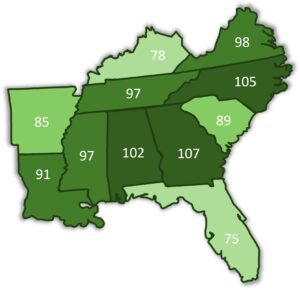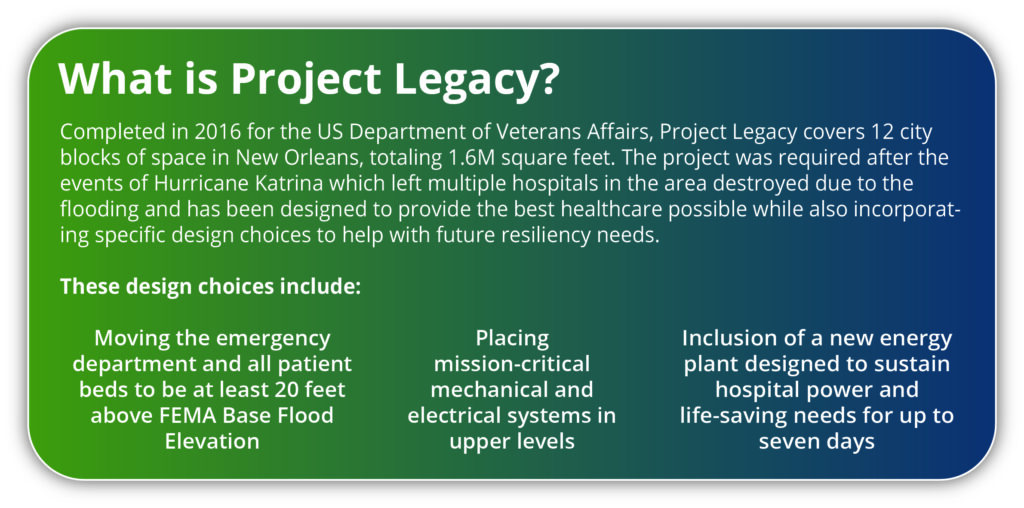- All Posts
- U.S. Infrastructure Resiliency Series: Keeping Ahead of the Storms in the Southeast
U.S. Infrastructure Resiliency Series: Keeping Ahead of the Storms in the Southeast

Authored by Jason Twill
For many facility owners and municipalities across the United States, the requirements of creating building and infrastructure solutions that can adapt and combat the various types of environmental hazards that impact them is critical for the health and well-being of the communities and people they serve. While these hazards can range from earthquakes and floods to hurricanes and wildfires, each geographical region of the U.S. will have unique climate transition impacts and weather and environmental challenges to overcome. With this in mind, we are kicking off the year with our U.S. Infrastructure Resiliency Series, a limited thought leadership series highlighting the common weather and climate impacts each region is facing as well as the solutions to help cities and towns across America to ‘weather the storm’ ahead to ensure a safe and prosperous future.
When people imagine the Southeast U.S., images of the Appalachian Mountains, jazz and country music, and the Gulf of Mexico come to mind, but the changing reality for citizens who live in this region is increasing anxiety over the increasing occurrence and intensity of hurricanes, floods, and heat waves. As noted by the Environmental Protection Agency, between 1980 and 2022, the Southeast region experienced over 1,000 weather-related disasters across 11 states which equated to at least a billion dollars per state in NOAA response. With almost 100 million people living in the Southeast currently, and current statistics identifying an increase in weather-related disasters, municipalities and property owners must prepare to defend their buildings and infrastructures for the safety and well-being of their occupants. But what does this preparation look like and how does it affect other areas of worry for building owners such as bottom-line costs?
Improving building and community infrastructures can look very different depending on the needs of end-users and the areas which the work, learning or play is being performed, as well as the type of facility and its function. For stadiums, it may look like improving redundancy and thermal conditioning for fans and athletes during games, but also to make sure the stadium can successfully house its wider community for shelters if needed. For a hospital, it may be a long overdue upgrade to their facility to align with current codes, but also to make sure it can withstand great weather-related forces without losing life-saving and patient-care capabilities, such as Project Legacy in New Orleans after Hurricane Katrina.
For communities and facilities needing critical infrastructure development, working with a project partner such as Viridis Initiative and utilizing the Infrastructure-as-a-Service model allows for clients to properly implement climate adaptation and resilience strategies asset portfolios to ensure their mission is never compromised.
At Viridis, we don’t look at our clients and partners as groups on a map, assuming they all face the same issues no matter what their facility type or history. We seek to discover every nuance that drives your project needs and goals, and then work with our team experts to co-develop tailored solutions to prepare you for the expected impacts within your region. We encourage anyone interested in learning more about our infrastructure-as-a-service model and other services to reach out to our team of experts, each of whom is ready to discuss your specific questions and needs.
